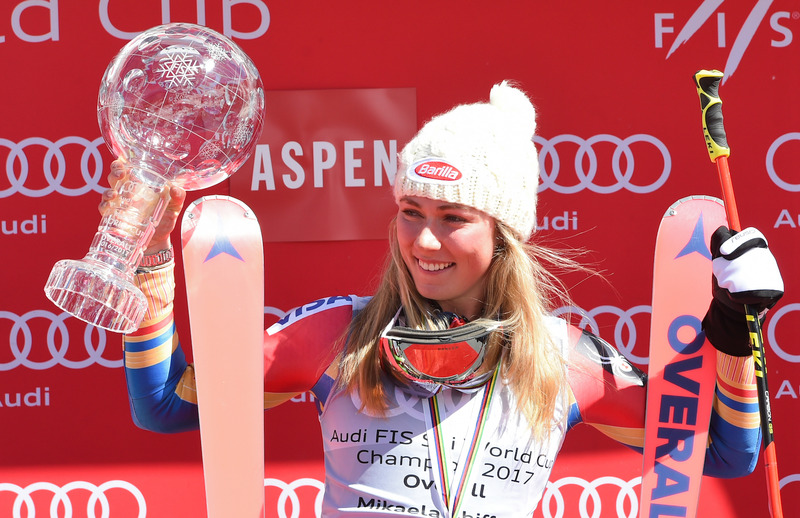The Local newsletter is your free, daily guide to life in Colorado. For locals, by locals.
The last time the Winter Olympics rolled around, Mikaela Shiffrin was a teenage sensation. The Vail native came into the 2014 Winter Games as the world slalom champion and went on to clinch gold in Sochi, Russia, becoming, at age 18, the youngest slalom champion in Olympic history. And she’s only gotten better since then.
Coming into this Olympic season, which kicks off Saturday with the World Cup opening giant slalom race in Soelden (aka Sölden), Austria, Shiffrin is still dominant in slalom, having won two more world championships in the discipline in 2015 and 2017. However, over the past four years, Shiffrin has seriously broadened her skill set.

She’s now also a top contender in giant slalom (GS). She followed up her 2014 Olympic slalom victory with her first World Cup GS win in Soelden. She landed second in the Soelden GS the following two seasons and wrapped up last season as the runner-up overall GS skier on the World Cup tour. Shiffrin has also begun dabbling in speed events. She barely missed the podium in the super-G race last season in Cortina d’Ampezzo, Italy, and clinched her first World Cup victory in the alpine combined event in Crans-Montana, Switzerland.
The 22-year-old’s crowning recent achievement, however, was skiing’s top prize— the 2017 World Cup overall title. And in terms of the upcoming 2018 Winter Games in Pyeongchang, South Korea, the implications are brow-raising: The possibility that Shiffrin comes home to Colorado with four medals is not outlandish.
“I had success in multiple events last year,” she says. “I think it’s fair to believe I could go into the Olympics and compete for not only one or maybe two medals, but maybe I could compete for three or four medals.”
While acknowledging that last season was her career best to date, Shiffrin is on a constant mission to up her game. “It was an incredible season for me and my best season to date, results-wise,” she says. “At the same time, I felt my skiing wasn’t always where I wanted it to be. I was always just able to squeak by with the races, but I wasn’t performing my technique, my tactics.”
This season, in order to perform at her highest level, she’s focusing on refining her fundamental skills, many of which she learned in her early days skiing in Colorado.
The Colorado Conduit
Although she spent many of her formative ski racing years in New England, it was growing up in Eagle-Vail and spending her early childhood on the slopes of Beaver Creek and Vail that sealed Shiffrin’s fate. She still gets out on the Colorado slopes as often as she can before and after the race season.
“The biggest part [Colorado] played in my career…is that I skied a lot,” she says. “I skied with my family, with my friends, and it really helped me grow my passion for the sport…. I wouldn’t be where I am without that passion—I definitely learned that passion in Colorado.”
Having skied all over the world, Shiffrin points out that Colorado and the American West are anomalies when compared to other slopes across the globe—which is why the world’s top alpine racing teams descend on Colorado every November for early season training at high elevations on dry snow conditions that simply don’t exist elsewhere.
“There’s a nice, sunny atmosphere, [and] the snow is almost always perfect; it’s powder, hero snow. The groomers are great,” she says. “When you go to the East Coast, everyone’s a little tough, a little more gritty, because they’re always dealing with difficult conditions to ski with. I find a lot of places in Europe to be a little more like the East Coast. The mountains are lower, closer to sea level.”
Following this weekend’s race in Austria, Shiffrin will embark on intensive early season training in Colorado—hoping to lay the foundation for a solid World Cup season and a potentially record-setting Olympic performance. As the ski racing season kicks off, the Vail athlete finds herself wrapped up in the excitement and expectations that come every four years with competing on the big stage. She’s widely considered to be America’s top medal hopeful going into the 2018 Games, but for her, the pressure is on every time she kicks out of the start gate.
“The Olympics almost has nothing to do with it,” she says. “It’s just a performance I want to put on, on a day-to-day basis. That includes the Olympics, that includes all the World Cup [races] this season.”








